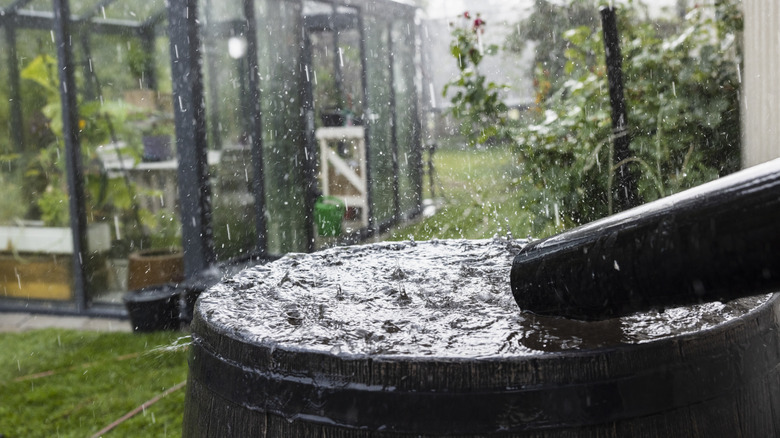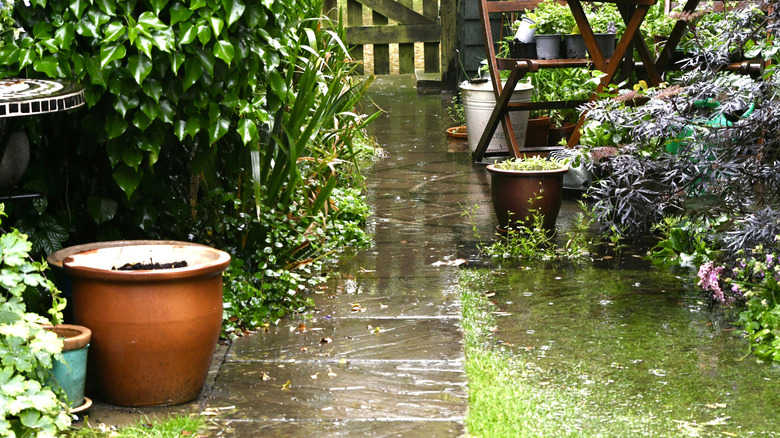A Rain Barrel Vs. Basin: What's The Difference, And Which Is Right For Your Garden
You're looking to collect rainwater for your garden? Great idea! It's a fantastic way to use a natural resource, and there are actually tons of benefits to using rainwater on your grass. So, now that you've made that decision, you've got another one to make: Do you opt for a rain barrel or a rain basin? Well, at first glance they're similar options, as both will help you conserve water and reduce runoff, but they work in very different ways. Let us break it down.
A rain barrel is exactly what it sounds like — it's a large barrel (or container), usually 50-100 gallons, that is placed beneath a downspout to catch and store rainwater that falls from your roof. Most will have a spigot near the bottom where you can fill up a watering can as and when you need to water your plants. Some fancier models even come with filtration systems to keep debris and insects out of your collected rainwater — how convenient. The biggest advantage of using a rain barrel is that it allows you to store water and keep a good eye on how much you have collected while giving you free rein to use the water as you please.
A rain basin, on the other hand, is much more of a passive way of doing things. Otherwise known as stormwater basins or rain gardens, they are shallow, landscaped indentations in the ground (think of them like a garden sink) that store rainwater runoff and allow the soil to slowly absorb it all. They are great for preventing erosion, and they also provide really deep watering for your plants and grass.
Choosing between a rain barrel or basin
Choosing between a rain barrel or a rain basin basically depends on the size, layout, and water needs of your garden, plot, or landscape. For smaller, more domestic spaces, a rain barrel is probably the most foolproof way to store and distribute rainwater yourself. They're great because they give you control over how much water each plant gets, so they're a gardener's dream for raised beds and containers. And they're not hard to make; you could DIY your own rain barrel with some basic materials and save yourself money while customizing the barrel to your aesthetic. Just avoid these common mistakes when using a rain barrel — like not planning for overflow.
If on the other hand, you're more looking to manage rain runoff and boost the overall moisture levels of your soil, then a rain basin might be the better choice for your outdoor space. Because they allow water to soak into the ground in a slower manner, they can help deep-rooted plants thrive while also reducing the risk of flooding. Though they ask for more effort upfront — digging a shallow depression takes a bit of muscle — once they're in place, they need very little maintenance.
Some seasoned gardeners even combine both methods: a barrel to catch overflow from a basin or vice versa, creating a two-way system to conserve water. In areas with sporadic rain, this hybrid setup can work to help you always have water on hand while also recharging the soil. It's a solid option for anyone who lives in drought-prone parts of the world.

